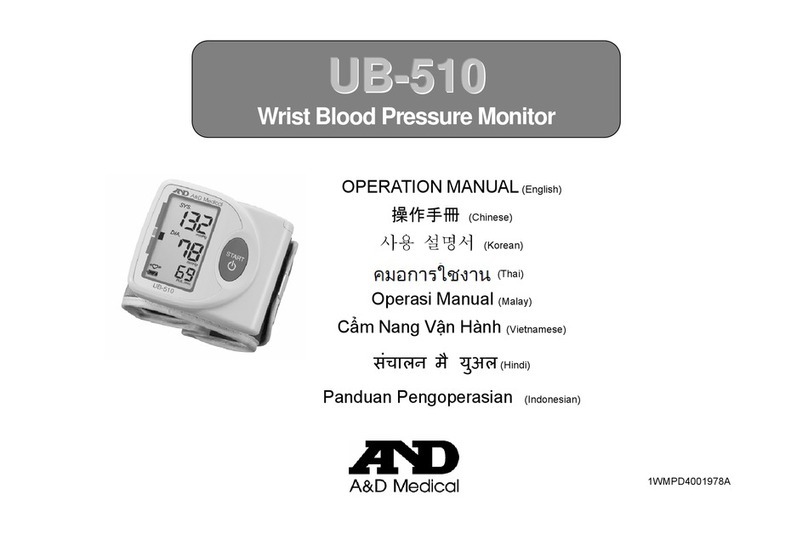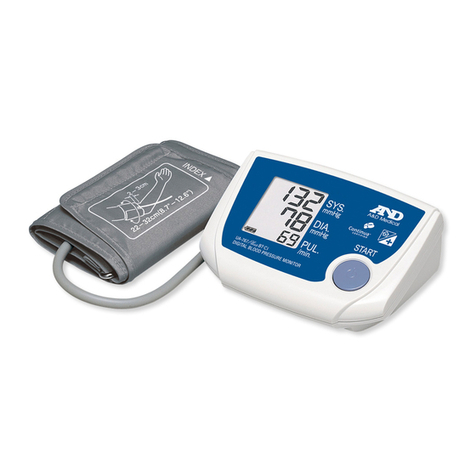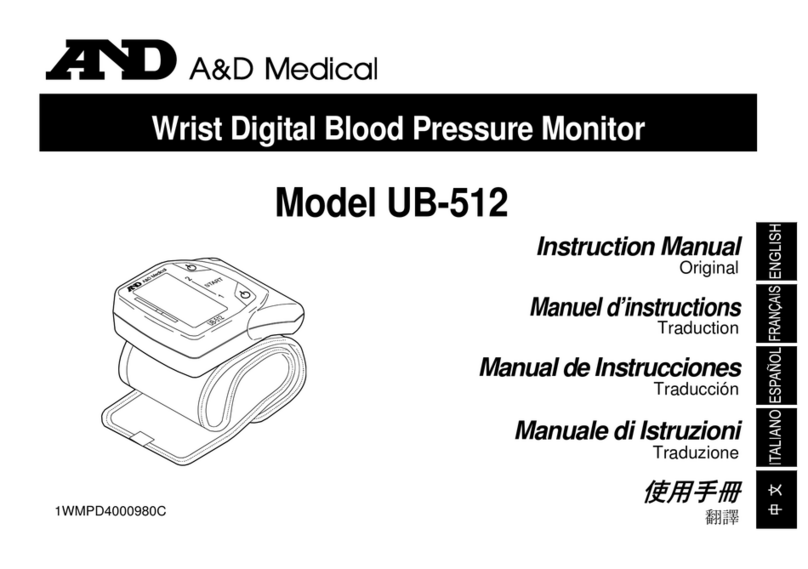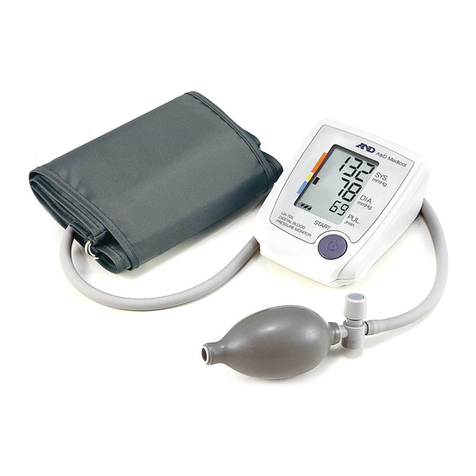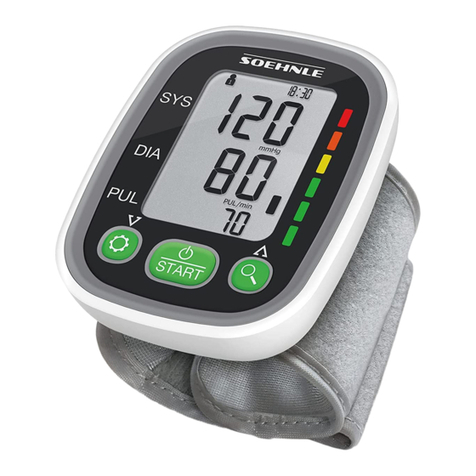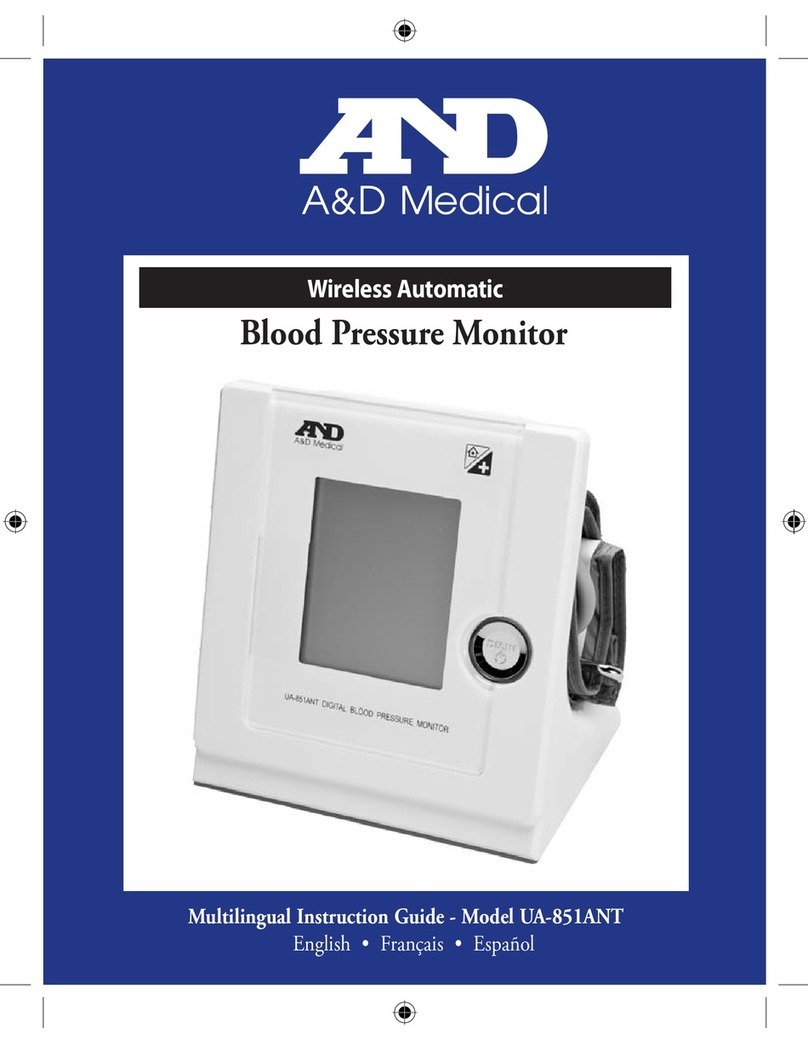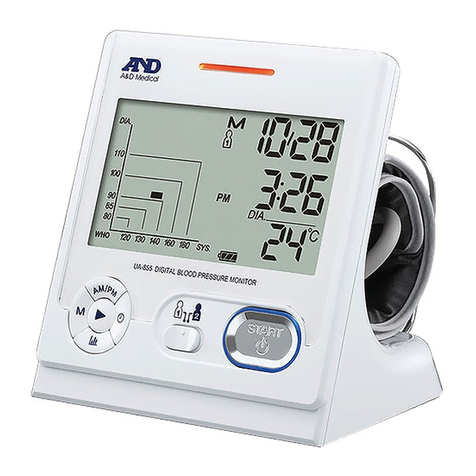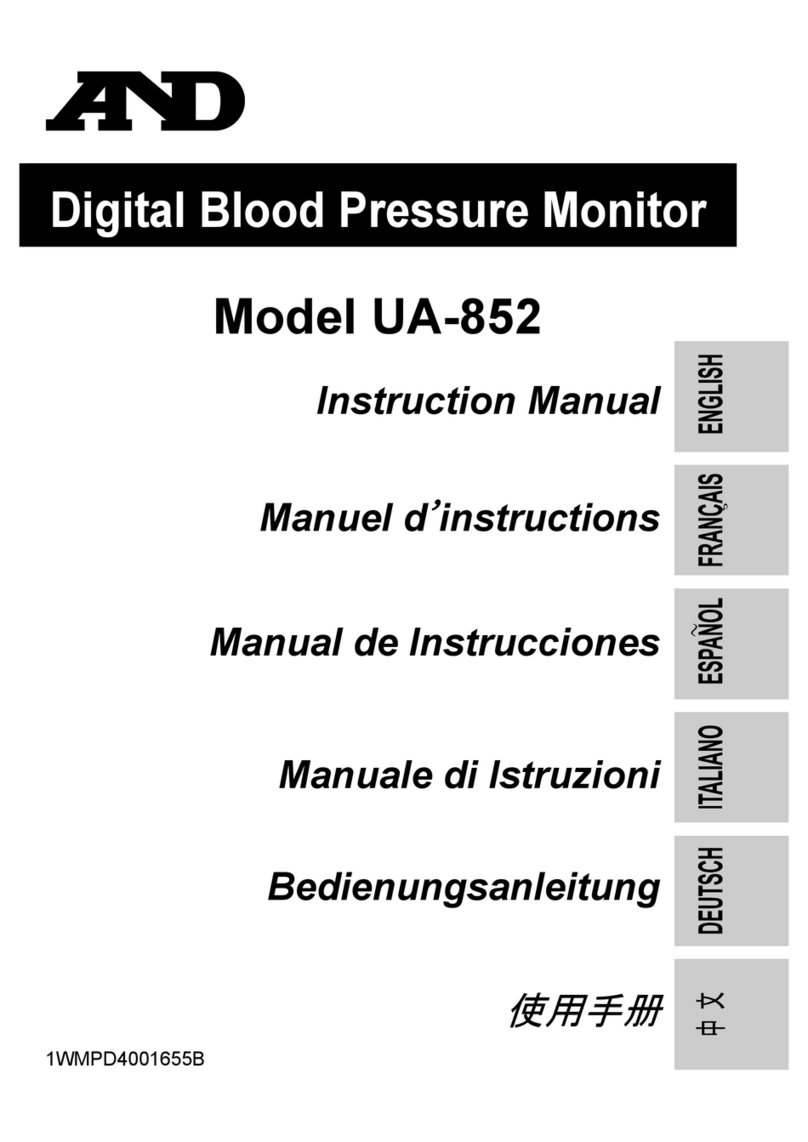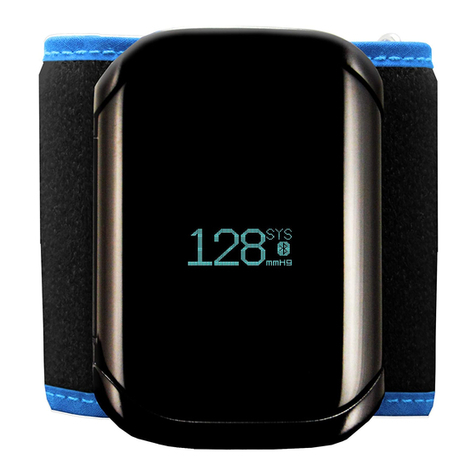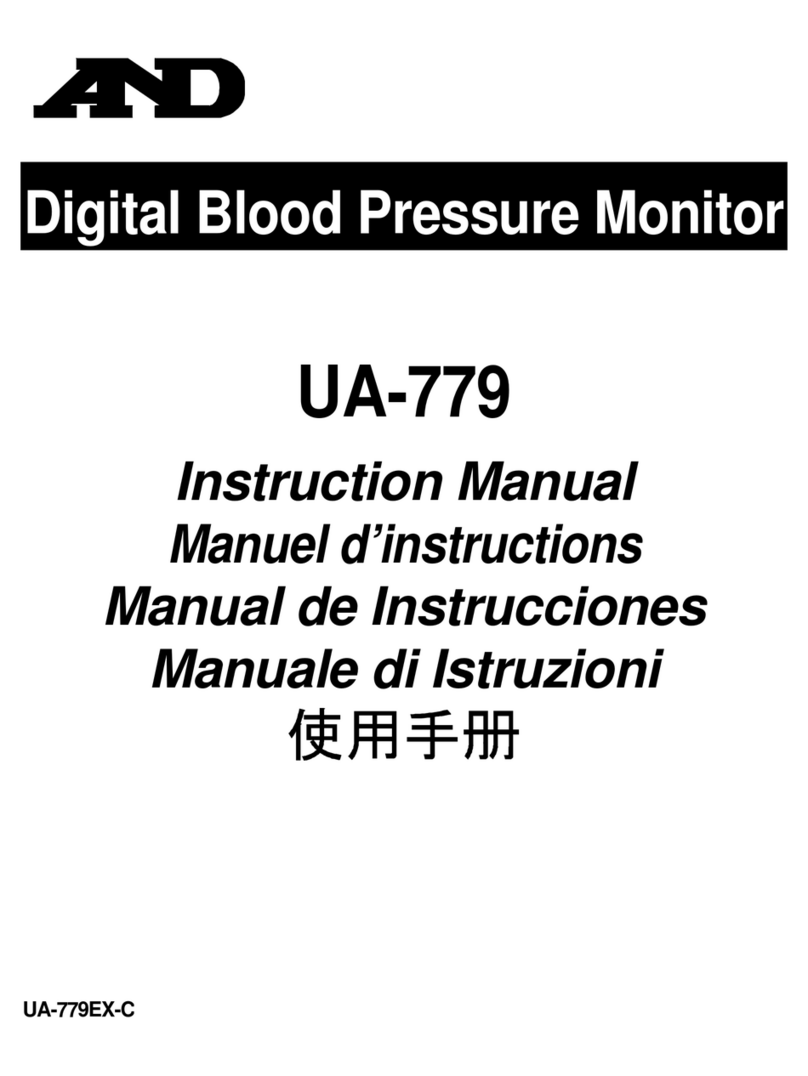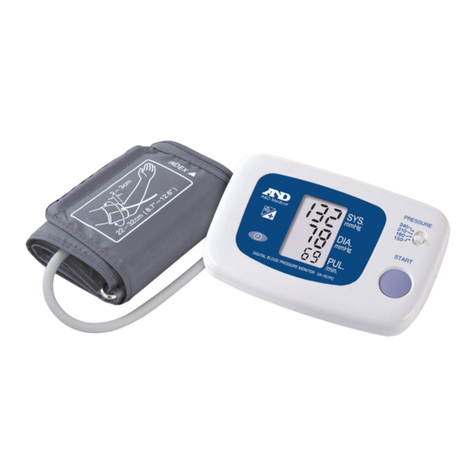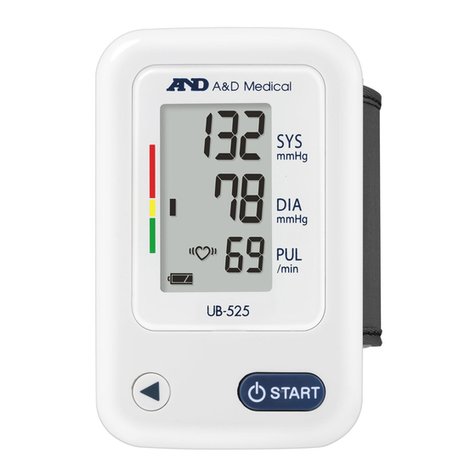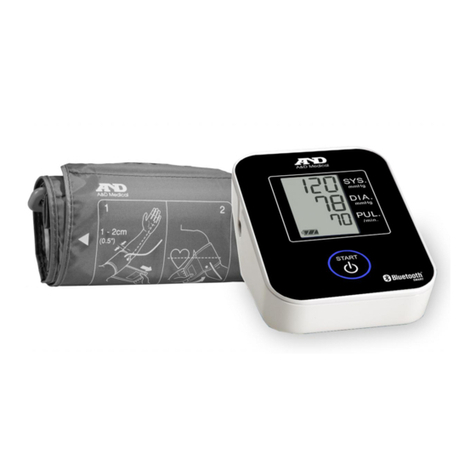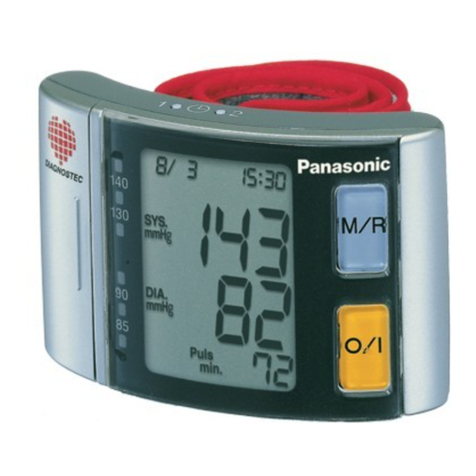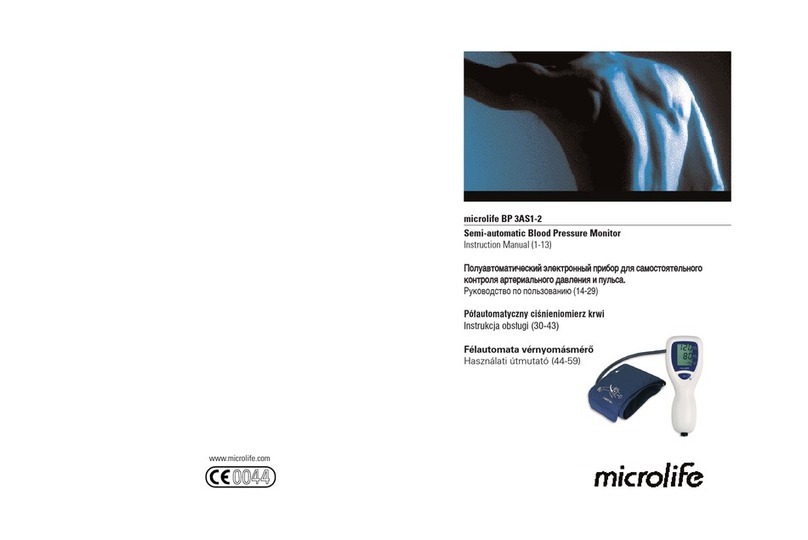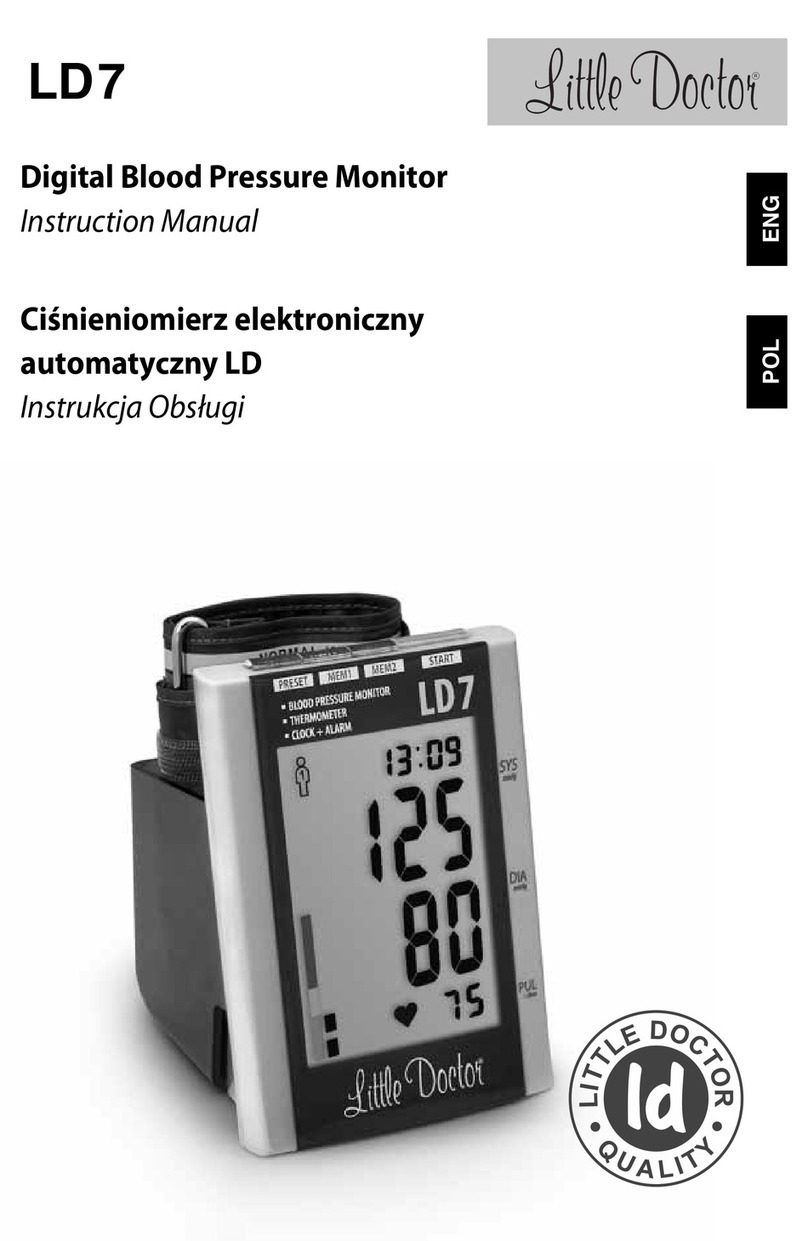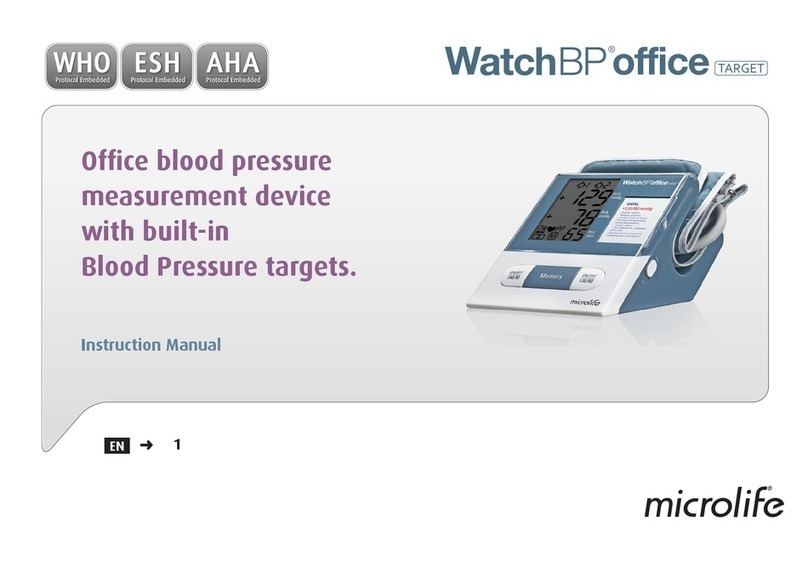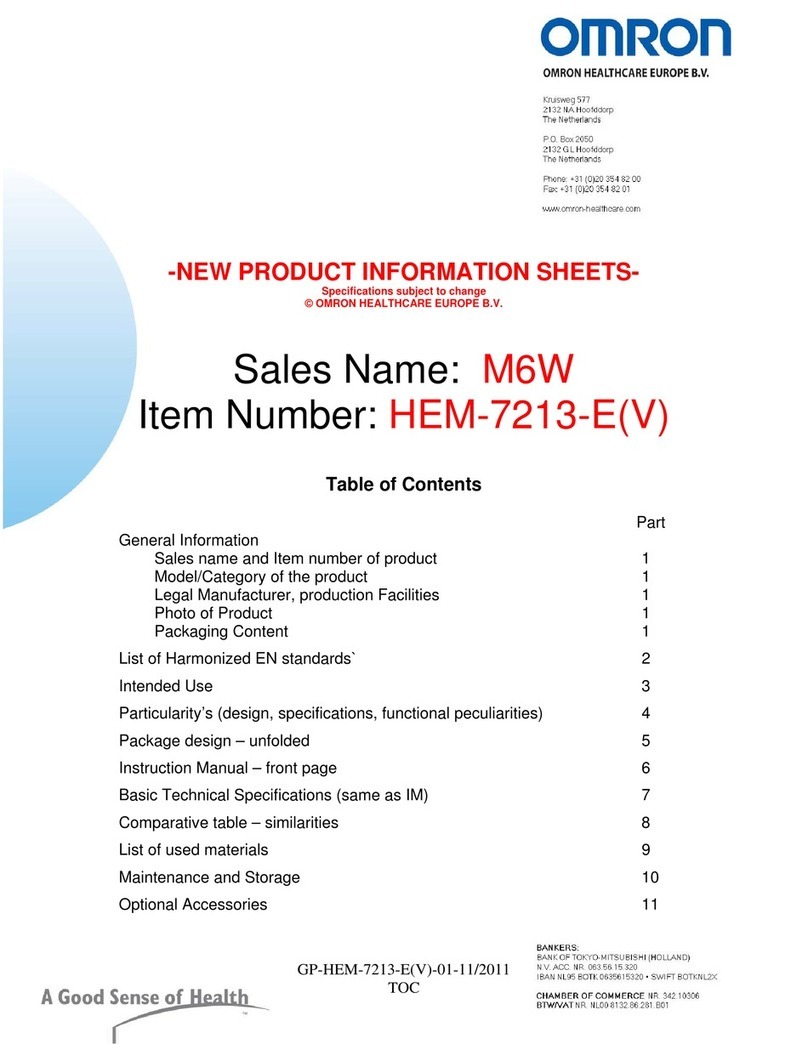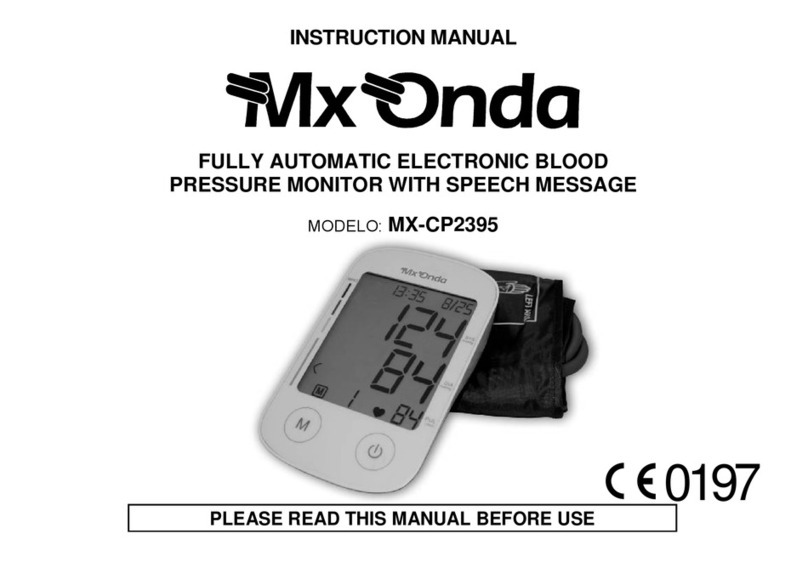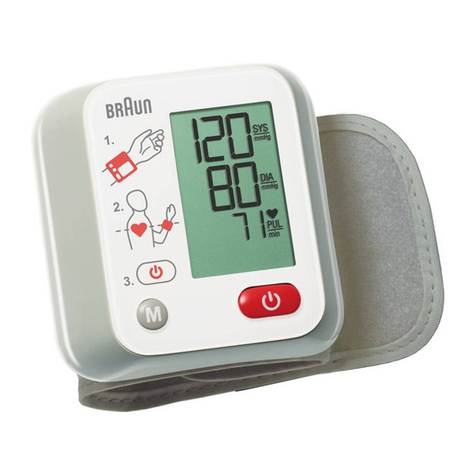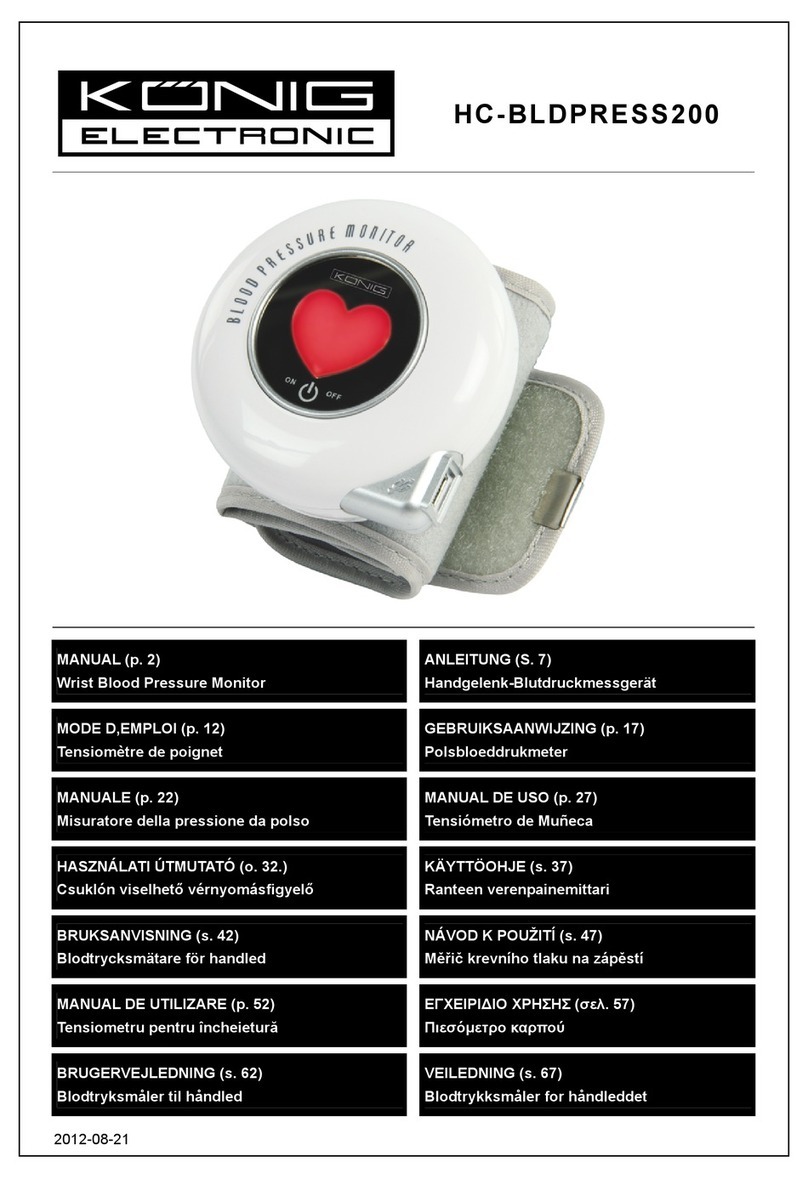Make sure that the electrical outlet is properly grounded and supplies the specified
voltage and frequency (100-240V~ 50-60 Hz, more than 85VA).
Connect the monitor to a grounded, 3-prong outlet.
If a grounded, hospital-grade, 3-prong outlet is not available, connect the ground
wire to an outlet with a contact terminal and ground it. Using the monitor with an
incorrect outlet may cause an electrical shock.
Use the monitor safely and correctly.
Connect all cables correctly and securely.
Do not place objects on the monitor or power cable.
Ensure cuff cover is fitted before use.
Using other devices in conjunction with this monitor may cause incorrect diagnosis or
safety problems. When used, check for safety.
Always use accessories and consumables approved byA&D.
Carefully read the instruction manuals provided with optional items.
The precautions for these items are not listed in this manual.
For safe and correct use of this monitor, always perform a pre-inspection (an
inspection before use).
If the monitor is covered with condensation, allow it to dry before switching the power
on.
If the monitor has not been used for an extended period, check that the monitor
operates normally and safely before using it.
The pressure of the cuff may cause a patient’s arm to become numb.
3. When using the monitor.
Do not use a mobile phone near the monitor. It may cause a malfunction.
Do not use the monitor in a moving vehicle as this may result in inaccurate
measurements.
Always check the conditions of the monitor, its parts and the patient for safety.
If a problem is found with the monitor, its parts or the patient, stop using the monitor,
check the status of the patient and take appropriate actions.
Do not use the monitor near a strong magnetic or electric field.
Do not use the monitor on a patient using a heart-lung machine.
Warning

